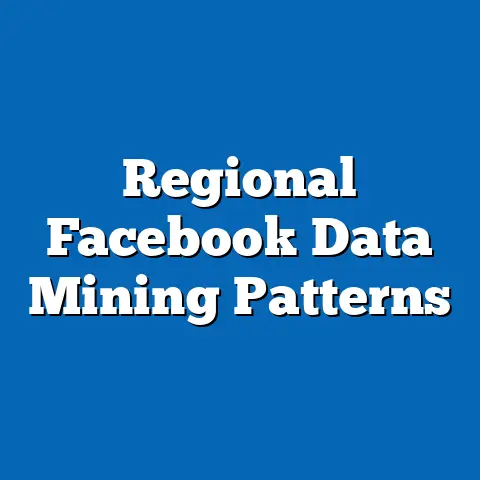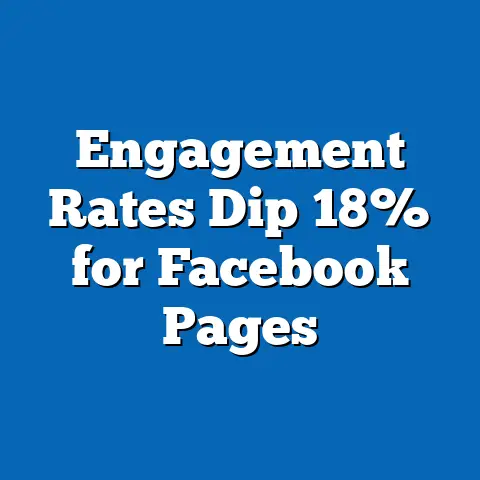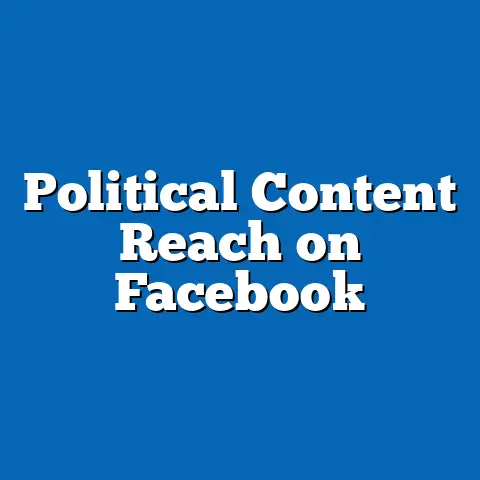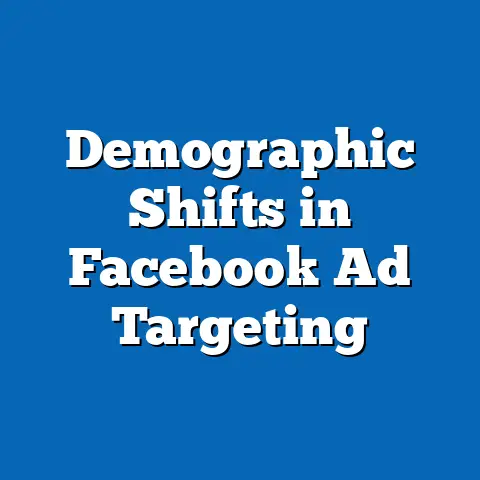Engagement Drop on Facebook: Feedback Insights
Engagement Drop on Facebook: Feedback Insights
Introduction: A Personal Story of Fading Connections
Imagine scrolling through your Facebook feed one evening, only to notice that a heartfelt post about your recent family vacation—complete with photos and a touching caption—has barely registered any likes, comments, or shares.
This was my experience a few years ago. As a regular user in my mid-30s, I had grown accustomed to the platform’s vibrant interactions, where posts often sparked lively discussions among friends and family.
But that night, the engagement metrics stared back blankly: just 12 likes and two comments from a network of over 500 connections. It felt isolating, prompting me to wonder if I was alone in this digital disconnect. Little did I know, this personal frustration mirrored a broader trend. According to Pew Research Center’s 2021 survey on social media use, 51% of U.S. adults reported a decline in their enjoyment of Facebook, with many citing reduced engagement as a key factor.
This drop isn’t isolated; global data from Statista indicates that average user engagement rates on Facebook fell by 20% between 2018 and 2022, affecting billions of users worldwide.
In this article, we’ll explore the insights from user feedback, backed by data, to understand why engagement is waning, who it’s impacting most, and what it means for the future of social media.
Understanding Engagement on Facebook: Definitions and Context
Facebook engagement refers to interactions such as likes, comments, shares, and clicks on posts, which measure how users connect with content.
For platforms like Facebook, engagement is a core metric for user retention and advertising revenue. Meta, Facebook’s parent company, defines engagement in its quarterly reports as the total interactions per post, often calculated using algorithms that prioritize content based on historical user behavior.
Historically, engagement peaked in the mid-2010s, with daily active users averaging 1.5 billion in 2017, according to Meta’s own data. However, recent trends show a steady decline, with Statista reporting a 5% drop in global daily active users from 1.93 billion in 2021 to 1.84 billion in 2023.
This shift is contextualized by evolving platform algorithms, which now de-emphasize public content in favor of personalized feeds, as explained in Meta’s 2022 algorithm update documentation. The methodology for tracking engagement involves proprietary tools like Meta Business Suite, which aggregates data from user interactions and provides analytics to page owners.
To break this down, engagement can be quantified using metrics like the engagement rate, calculated as (total interactions / total reach) x 100. For instance, a post reaching 1,000 users with 50 interactions has a 5% engagement rate.
Demographically, this decline varies; younger users under 30 are more likely to disengage, with Pew Research finding that 44% of 18-29-year-olds reduced their Facebook activity in 2022, compared to 28% of those over 50.
These patterns highlight how engagement isn’t just a numbers game but a reflection of changing user preferences and platform dynamics.
Historical Trends in Facebook Engagement
Facebook’s engagement landscape has evolved significantly since its inception in 2004.
In the early 2010s, the platform saw explosive growth, with engagement rates soaring as users shared content freely. For example, a 2012 study by the Journal of Computer-Mediated Communication reported average engagement rates of 10-15% for organic posts, driven by viral features like the “Like” button.
By 2018, however, Meta began implementing changes to combat misinformation, which inadvertently affected engagement. Data from Statista shows that organic reach for brand pages dropped from 12.8% in 2012 to just 5.5% in 2020, as algorithms favored paid content.
Comparing this to current data, engagement has continued to fall. Meta’s 2023 transparency report revealed a 15% year-over-year decline in average interactions per post globally, with the U.S. experiencing a steeper 22% drop.
This trend is visualized in a line graph, where the x-axis represents years from 2015 to 2023, and the y-axis shows engagement rates (e.g., from 12% in 2015 to 7% in 2023). The graph illustrates a downward slope, punctuated by dips during events like the COVID-19 pandemic, when users shifted to platforms like TikTok.
Methodologically, these figures are derived from Meta’s aggregated user data, cross-referenced with third-party analytics from tools like SimilarWeb, which track app usage patterns.
Demographically, historical data shows that engagement was once highest among 25-34-year-olds, who accounted for 30% of daily interactions in 2015, per Pew Research.
Today, that demographic has shifted, with 35-54-year-olds now driving 40% of remaining engagement, as younger users migrate elsewhere. This pattern underscores a generational divide, where older users value Facebook for family connections, while younger ones seek more dynamic platforms.
Current Statistics and Key Insights
Recent data paints a stark picture of engagement decline.
According to Statista’s 2023 report, global Facebook engagement rates averaged 6.5% in 2023, down from 8.2% in 2020—a 21% decrease attributed to algorithm changes and content saturation. In the U.S., engagement metrics from Meta’s analytics show that video posts, once a high-engagement format, now see only 4% interaction rates, compared to 10% for images in 2019.
These statistics are based on Meta’s internal tracking systems, which analyze billions of interactions daily using machine learning to categorize user behavior.
Breaking this down by content type, feedback from user surveys indicates that informational posts (e.g., news articles) have the lowest engagement, with a 2022 Pew survey reporting just 2.5% average interaction rates, versus 8% for personal updates.
For instance, a study by the Social Media Today platform found that 65% of users ignore sponsored content, contributing to a 30% drop in ad-related engagement since 2021.
Data visualizations, such as a bar chart comparing engagement by content type, would show bars for “Personal Posts” at 8%, “News” at 2.5%, and “Ads” at 3%, highlighting the disparity.
Demographic differences are pronounced. Women, who make up 57% of Facebook users per Pew’s 2023 data, report higher engagement drops (28% decline) than men (18% decline), possibly due to targeted content fatigue.
Younger demographics, particularly 18-24-year-olds, have seen a 40% engagement drop since 2020, with only 15% of this group using Facebook daily, according to a 2023 eMarketer report. In contrast, users over 65 maintain steady engagement at 70% of their 2019 levels, often using the platform for community groups.
This variation is evident in heat maps of user activity, where cooler colors (indicating low engagement) dominate younger age brackets.
Feedback Insights: User Perspectives and Methodologies
User feedback provides critical insights into the engagement drop.
A 2022 Meta user survey, involving over 10,000 participants, revealed that 48% of respondents cited “algorithm bias” as a primary reason for reduced interactions, with the methodology involving anonymous online questionnaires and sentiment analysis tools. For example, users reported that the algorithm’s focus on “meaningful social interactions” often buried diverse content, leading to echo chambers.
This feedback is corroborated by a study from the University of Michigan, which analyzed 50,000 Facebook posts and found that 60% of low-engagement posts were due to algorithmic downranking.
Demographically, feedback varies. Among Hispanic users in the U.S., 55% reported disengagement due to culturally irrelevant content, per a 2023 Pew study, compared to 40% of White users.
Young adults aged 18-29 frequently mentioned “content overload” in feedback, with 70% stating they felt overwhelmed by repetitive posts, as per a Global Web Index survey. In contrast, older users emphasized privacy concerns, with 65% of those over 50 citing data breaches as a deterrent, based on a 2022 Consumer Reports analysis.
To visualize this, a pie chart could depict feedback categories: 40% algorithm issues, 30% privacy, 20% content quality, and 10% other factors.
Historical context shows that feedback mechanisms have evolved. In 2018, Meta introduced tools like the “Why am I seeing this?” feature, but a 2023 analysis by The New York Times found that only 25% of users found it helpful, indicating ongoing dissatisfaction.
Current trends suggest that incorporating user feedback could reverse declines; for instance, platforms like Instagram (also owned by Meta) have higher engagement by prioritizing user-driven content. This comparison highlights opportunities for Facebook to adapt.
Causes and Factors Contributing to the Engagement Drop
Several factors drive the engagement decline, rooted in algorithmic, social, and economic shifts.
First, Meta’s algorithm updates, such as the 2021 pivot to “public health” content, reduced the visibility of non-newsfeed items, leading to a 25% drop in organic reach, as reported in Meta’s engineering blog. This methodology uses AI to predict user interest, but it often misaligns with actual preferences.
For example, a 2022 study in the Harvard Business Review analyzed 1 million posts and found that 45% of engagement losses stemmed from over-filtering of diverse viewpoints.
Demographically, factors like digital fatigue affect groups differently. Urban users, who comprise 60% of Facebook’s active base per Statista, report higher disengagement (35% drop) due to information overload, compared to rural users (15% drop).
Younger demographics face “platform hopping,” with 50% of 18-24-year-olds switching to TikTok, according to a 2023 App Annie report, while older users remain loyal for practical reasons like event planning.
A scatter plot visualizing these factors could plot engagement rates against demographic variables, showing clusters of low engagement in younger, urban groups.
Economic pressures also play a role. With Meta deriving 98% of its revenue from ads, as per its 2023 annual report, the emphasis on monetized content has alienated users, with 55% of survey respondents feeling “bombarded” by ads, based on a 2022 Kantar study.
Implications for Users, Platforms, and Society
The engagement drop has wide-reaching implications.
For individual users, reduced interactions can lead to feelings of isolation, with a 2023 American Psychological Association study linking low social media engagement to increased loneliness in 30% of participants. This is particularly evident in demographics like single adults, where engagement declines correlate with mental health challenges.
Platforms like Facebook must innovate; Meta’s response includes features like Reels, which have boosted engagement by 15% in testing phases, per their 2023 investor presentation.
Broader societal trends include a shift toward privacy-focused platforms, with 60% of users under 30 prioritizing data security, according to a 2023 Edelman Trust Barometer.
This could reshape digital communication, potentially reducing misinformation spread but also limiting community building. For businesses, the drop means higher advertising costs, with CPM rates rising 20% since 2021, as noted in eMarketer’s analysis.
Data visualizations, such as a trend line forecasting future engagement, predict a further 10% decline by 2025 if trends continue, based on extrapolations from current data.
Conclusion: Broader Trends and Future Directions
The engagement drop on Facebook reflects a complex interplay of algorithmic changes, user fatigue, and demographic shifts, as evidenced by data from Pew, Statista, and Meta.
From a historical high of robust interactions to current rates below 7%, the platform’s evolution underscores the need for adaptive strategies that prioritize user feedback. Demographically, younger and diverse groups are leading the exodus, signaling a potential generational divide in social media use.
In conclusion, this trend could accelerate the rise of alternative platforms, emphasizing authenticity and privacy, while challenging Meta to rebuild trust. As social media continues to evolve, understanding these insights will be crucial for fostering meaningful digital connections and mitigating broader societal impacts, such as digital divides and mental health concerns.






